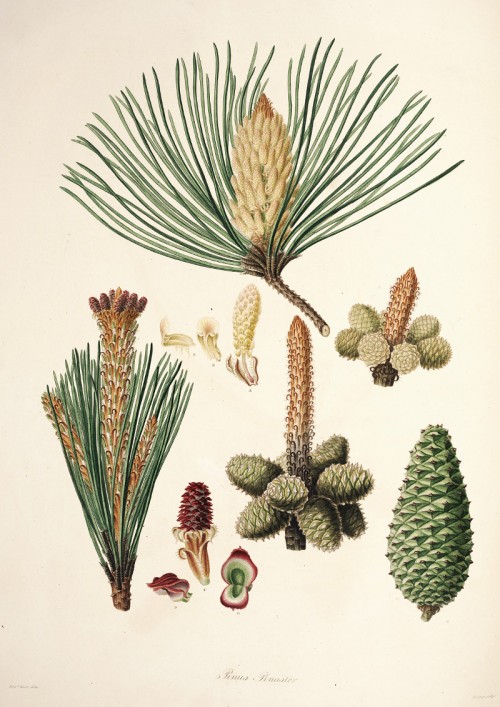Dies ist eine alte Version des Dokuments!
Pinus pinaster Aiton - syn.Pinus maritima Lam. non Mill. - Pinaceae - maritime pine, See-Kiefer, Meer-Kiefer, Bordeaux-Kiefer
Tree of the Mediterranean coasts, up to 30m high; bark brown to orange-red, deeply and irregularly longitudinally furrowed; branches forming a pyramidal crown; needles bright green, usually twisted, 10-20cm long by 2mm wide.
„The Pinus pinaster is divided into two subspecies and five varieties.“
http://de.wikipedia.org/wiki/Pinus_pinaster
„P. pinaster is a successful invasive species in South Africa. One of the results of its invasion in South Africa is a decrease in the biodiversity of the native environment… In addition to being an efficient disperser, P. pinaster is known to produce oleoresins, such as oily terpenes or fatty acids, which can inhibit other species within the community from growing. These resins are produced as a defense mechanism against insect predators, such as the large pine weevil.“
http://en.wikipedia.org/wiki/Pinus_pinaster
„The chromatographic analysis of the volatile leaf oil of Pinus pinaster Ait. showed 42% of monoterpene hydrocarbons (α-pinene, camphene, β-pinene, myrcene, 3-carene, limonene, cis-ocimene, terpinolene, para-cymene, 35% of sesquiterpene hydrocarbons (cubebene, copaene, caryophyllene, humulene, germacrene D, α- and γ-muurolenes, δ- and γ-cadinenes) and 23% of oxygenated compounds including esters (linalyl, bornyl, geranyl, neryl and farnesyl acetates), alcohols (cis-hexenol, linalool, α-fenchol, trans-pinocarveol, terpinen-4-ol, α-terpineol, dihydrocarveol, guaiol, junenol and α-cadinol), one aldehyde (hexenal) and one ketone (piperitone). Three non terpenoid phenylethyl esters were also identified: phenylethyl isovalerate, methyl-2-butyrate and 3,3-dimethylacrylate. Some alcohols and mainly α-terpineol and linalool seemed to be formed during the steam distillation process, they were absent when the leaf oil was obtained by maceration of small portions of leaves in the usual solvents of terpenes.“
[Identification des constituants de l'essence des aiguilles de Pinus pinaster. Pauly, G., Gleizes, M., & Bernard-Dagan, C., Phytochemistry, Vol.12(6), 1973, 1395-1398]
The highly attractive scent of P.pinaster resin exposed to the sunshine „… is certainly one of the most impressive olfactory experiences available in the coastal regions of mediterraneaen countries… the secret of this unique environmental scent are (ω-1)-macrolides such as tetradecan-13-olide and hexadecane-15-olide, accompanied by ω-macrolides such as pentadecan-15-olide and hexadecan-16-olide, togehter with the compounds responsible for the woody and resinous notes.“
[Meaningful Scents around the World, Roman Kaiser, Zürich 2006, 146-147]

Lambert, A.B., Description of the genus Pinus and some other remarkable plants, 2nd ed., vol.1, t.4 (1890) [Ferdinand Bauer]
http://plantgenera.org/species.php?id_species=794980
